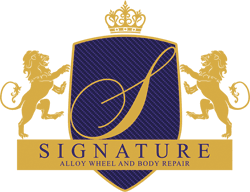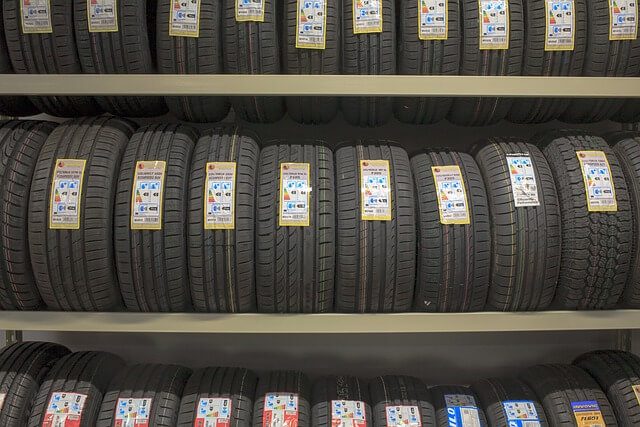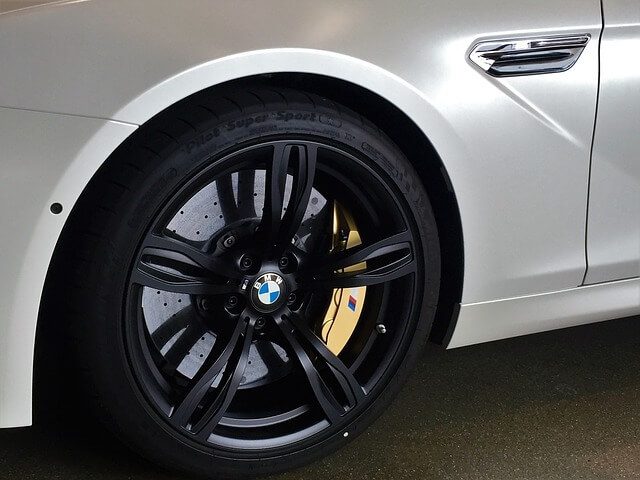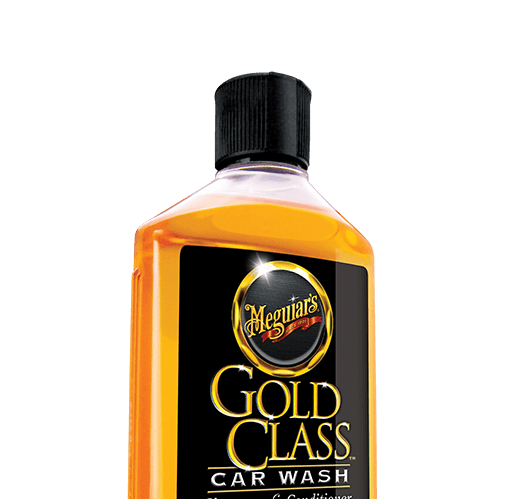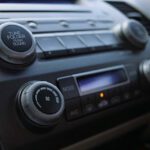
How to Keep Your Car Cool in Summer: Beat the Heat and Enjoy Comfortable Drives
21 June 2023
Car Paintwork Guide: Keep Your Vehicle Looking Flawless
6 July 2023Welcome to our comprehensive guide on car maintenance tips. Whether you're a seasoned driver or a new car owner, understanding how to properly maintain your vehicle is crucial for its longevity and optimal performance.
In this article, we will provide you with a wealth of knowledge, expertise, and practical advice to ensure your car stays in top shape. From routine car maintenance tasks to troubleshooting common issues, we've got you covered. So, let's dive in and discover the secrets to keeping your car running smoothly!
Importance of Regular Car Maintenance
Regular car maintenance is crucial for the overall performance and longevity of your vehicle. To illustrate, here are some reasons why maintaining your car is essential:-
- It improves safety on the road.
- It enhances fuel efficiency, saving you money on fuel costs.
- It prevents costly repairs by addressing issues early on.
- It maintains the value of your car.
- It ensures a smooth and comfortable driving experience.
Car Engine Maintenance
The engine is the heart of your car, and proper maintenance is vital for its optimal functioning.
Checking and Changing Engine Oil
Regularly checking and changing the engine oil is essential to keep your engine running smoothly. Engine oil lubricates various moving parts, reducing friction and heat buildup. Over time, oil can become contaminated with dirt and debris, leading to engine wear and decreased efficiency. To prevent this, it's recommended to change your oil every 3,000 to 5,000 miles or as per your vehicle manufacturer's guidelines. This simple yet crucial car maintenance task can significantly extend your engine's lifespan.
In order to keep your car's engine in good working condition, please follow these steps:-
- Firstly, park your car on a level surface and let the engine cool down.
- Locate the oil dipstick, usually with a yellow or orange handle, and pull it out.
- Wipe the dipstick clean, reinsert it, and pull it out again to check the oil level.
- If the oil level is low, add the recommended oil type as specified in your car's manual.
- Finally, change the engine oil and oil filter as per the manufacturer's recommended intervals.
Replacing Air Filters
Air filters play a crucial role in keeping your engine clean and efficient. They prevent dust, debris, and other contaminants from entering the engine, ensuring a clean air supply. Over time, air filters can become clogged, reducing airflow and decreasing fuel efficiency. Regularly inspect and replace your air filters every 12,000 to 15,000 miles or as per your vehicle manufacturer's recommendations. By doing so, you'll improve your car's performance and protect the engine from unnecessary damage.
In order to replace air filters, follow these steps:-
- Firstly, locate the air filter housing, usually located near the engine.
- Open the housing and remove the old air filter.
- Inspect the filter for dirt and debris. If it appears dirty or clogged, replace it with a new one.
- Finally, close the housing securely.
Checking Spark Plugs
Spark plugs ignite the air-fuel mixture in the engine cylinders. Therefore, to ensure smooth ignition, make sure you follow these steps:-
- Firstly, locate the spark plugs, usually attached to thick rubber wires.
- Remove the wire connector from the spark plug.
- Use a spark plug socket and ratchet to remove the spark plug.
- Inspect the spark plug for wear or damage. If necessary, replace it with a new one.
- Apply a small amount of anti-seize compound to the threads of the new spark plug and install it.
- Finally, re-attach the wire connector securely.
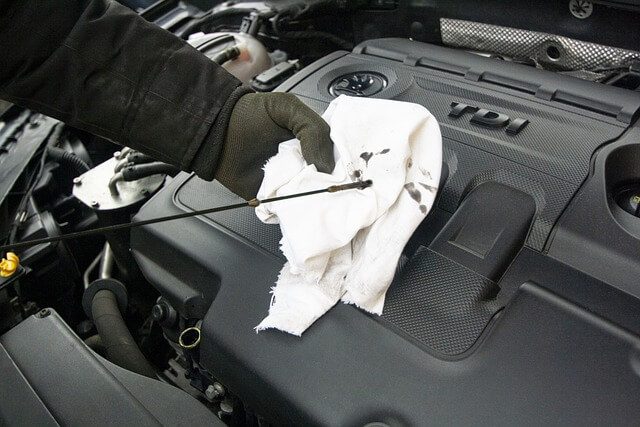
Mechanic checking car engine oil
Car Tyre Care & Maintenance
Proper tyre maintenance ensures better handling, improved fuel efficiency, and increased tyre lifespan. Therefore, it's an essential aspect of car maintenance.
Start by regularly checking your tyre pressure using a reliable pressure gauge. Underinflated tyres can decrease fuel economy and affect vehicle handling, while overinflated tyres can lead to reduced traction and uneven wear. Additionally, inspect your tyres for signs of wear and tear, such as uneven tread wear or bulges. If necessary, rotate your tyres every 5,000 to 8,000 miles to ensure even wear and maximise their lifespan.
Regular Tyre Rotation
Regularly rotating your tyres helps distribute wear evenly. So to keep your tyres in good condition, please follow these steps:-
- Firstly, refer to your car's manual for the recommended tyre rotation pattern.
- Jack up your car and secure it with jack stands.
- Remove the tyres and reposition them according to the rotation pattern.
- Finally, tighten the lug nuts in a star pattern and lower the car.
Proper Tyre Inflation
Maintaining the correct tyre pressure is essential for safety and optimal performance. Therefore, to maintain correct tyre pressure, please follow these steps:-
- Firstly, use a tyre pressure gauge to check the pressure of each tyre.
- Refer to your car's manual for the recommended tyre pressure.
- Finally, Inflate or deflate the tyres as needed to match the recommended pressure.
Checking Tyre Tread
Inspecting the tyre tread helps identify signs of wear and tear. So to check your tyre tread, make sure you follow these steps:-
- Firstly, Insert a penny into the tyre grooves with the Queen's head upside down.
- If you can see the top of the Queen's head, the tyre tread is worn and needs replacement.
- Finally, consider getting new tyres if the tread depth is below the recommended threshold.
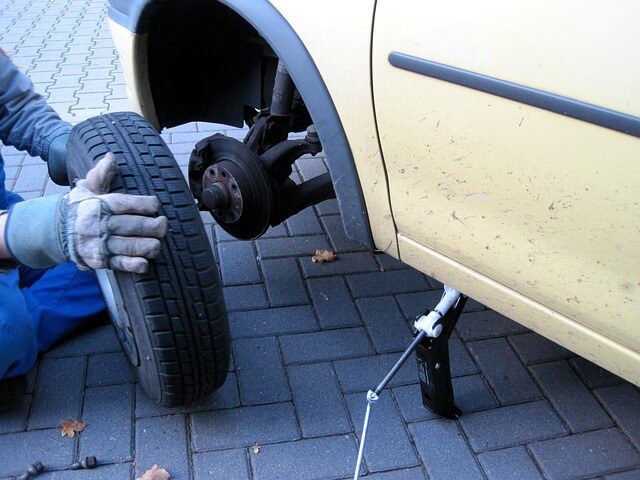
Mechanic replacing worn car tyres
Car Battery Maintenance
Your car's battery provides the electrical energy needed to start the engine and power various components. To keep your battery in good condition, inspect it regularly for corrosion, loose connections, or any signs of damage. A well-maintained battery ensures reliable starting and electrical system performance. Therefore, it's a very important aspect of car maintenance.
If your battery is more than three years old or showing signs of weakness, consider replacing it to avoid unexpected breakdowns.
Checking Battery Connections
Regularly inspecting battery connections helps prevent electrical issues. Therefore, to inspect your car's battery, please ensure you follow these steps:-
- Firstly, turn off the engine and let the battery cool down.
- Inspect the battery terminals for corrosion or loose connections.
- Clean the terminals with a mixture of baking soda and water.
- Finally, tghten any loose connections.
Cleaning Battery Terminals
Corrosion on battery terminals can hinder proper electrical flow. Therefore, in order to combat corrosion on the battery, be sure to follow these steps in order to clean the terminals:-
- Firstly, prepare a mixture of baking soda and water.
- Use a wire brush to scrub the terminals gently.
- Rinse the terminals with clean water.
- Finally, dry the terminals with a clean cloth.
Testing Battery Health
Checking the battery's health helps you anticipate potential issues. So in order to check battery health, follow these steps:-
- Firstly, use a battery tester or a voltmeter to check the battery voltage.
- Compare the reading with the manufacturer's recommended voltage range.
- Finally, If the voltage is low, consider recharging or replacing the battery.
Car Braking System Maintenance
Maintaining a healthy braking system ensures your safety on the road. Regularly inspect your brake pads and discs for wear and replace them as needed. Signs of worn-out brakes include squeaking or grinding noises, reduced braking performance, or a spongy brake pedal. If you notice any of these signs, have your brakes inspected by a qualified mechanic immediately. Remember, maintaining a properly functioning brake system ensures reliable stopping power and avoids potential accidents.
Inspecting Brake Pads and Rotors
Regularly inspecting brake pads and rotors helps prevent brake failure. In order to inspect the brake pads, please follow these steps:-
- Firstly, lift your car and secure it with jack stands.
- Remove the wheels to access the brake pads and rotors.
- Inspect the brake pads for thickness. If they appear thin or worn, replace them.
- Finally, check the brake rotors for signs of damage or uneven wear. Resurface or replace them if necessary.
Checking Brake Fluid Level
Adequate brake fluid is necessary for proper braking performance. Therefore, to check the brake fluid, make sure you follow these steps:-
- Firstly, locate the brake fluid reservoir under the hood.
- Check the fluid level against the markings on the reservoir.
- If the fluid level is low, add the recommended brake fluid.
- Be cautious not to spill brake fluid on painted surfaces as it can cause damage.
Bleeding the Brakes
Bleeding the brakes removes air bubbles from the brake lines, ensuring proper brake operation. However, It's usually best to consult a professional mechanic for this particular car maintenance task.
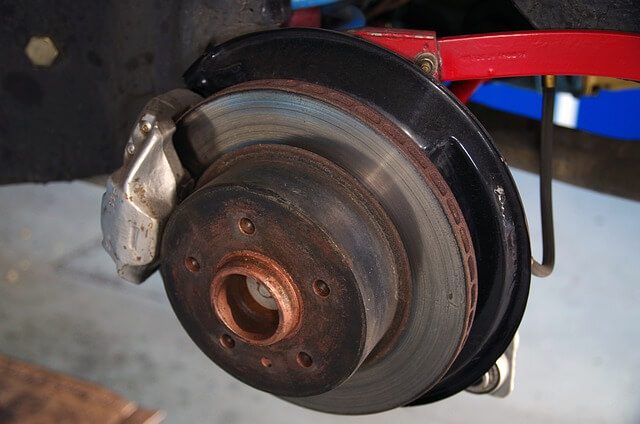
It's important to check and maintain the condition of your car's brakes
Car Fluid Checks & Maintenance
Regularly checking and maintaining essential fluids is crucial for your car's performance. It's also one of the basics of car maintenance.
Coolant Level Inspection
Proper coolant levels prevent engine overheating. So to check your coolant levels, please follow these steps:-
- Firstly, locate the coolant reservoir under the hood.
- Check the coolant level against the markings on the reservoir.
- If the level is low, add a 50/50 mixture of coolant and water to the reservoir.
Power Steering Fluid Check
Maintaining the correct power steering fluid level ensures smooth steering. So to check the fluid level for your power steering, make sure you follow these steps:-
- Firstly, locate the power steering fluid reservoir under the hood.
- Check the fluid level against the markings on the reservoir.
- If the level is low, add the recommended power steering fluid.
Windshield Washer Fluid Refill
Adequate windshield washer fluid is necessary for clear visibility. In order to check your washer fluid level, you should follow these steps:-
- Firstly, locate the windshield washer fluid reservoir under the hood.
- Check the fluid level against the markings on the reservoir.
- If the level is low, add windshield washer fluid to the reservoir.
Lights and Signals
Properly functioning lights and signals are crucial for your safety on the road. Therefore, checking your lights is an essential part of car maintenance.
Inspecting Headlights and Taillights
Regularly inspecting headlights and taillights ensures proper illumination. To check your lights, follow these steps:-
- Firstly, turn on the headlights and walk around your car to check their functionality.
- If any bulbs are not working, replace them with new ones.
- Finally, clean the lenses of the headlights and taillights to remove dirt and debris.
Testing Turn Signals
Checking the turn signals helps ensure other drivers are aware of your intentions. So to check your turn signals, please follow these steps:-
- Activate the turn signals one by one and visually inspect them.
- Replace any bulbs that are not functioning.
Replacing Faulty Bulbs
If any interior or exterior bulbs are faulty, replace them promptly. Follow these steps to replace your car's bulbs:-
- Firstly, consult your car's manual to locate the specific bulb.
- Remove the bulb by twisting or pulling it out.
- Finally, Insert the new bulb and ensure it is securely in place.
Interior and Exterior Care
Maintaining the interior and exterior of your car keeps it looking great and increases its resale value. Therefore, it's a vital aspect of car maintenance.
Regular Cleaning and Vacuuming
Regularly clean the interior of your car to remove dirt, dust, and debris. Vacuum the carpets and seats to keep them in good condition.
Protecting Paint and Upholstery
Apply wax or paint sealant to protect the exterior paint from UV rays and environmental damage. Use fabric protectors for upholstery to prevent stains.
Lubricating Door Hinges
Applying a small amount of lubricant to the door hinges prevents squeaking and ensures smooth operation.
Conclusion on Car Maintenance
Regular car maintenance is essential for keeping your vehicle in top condition. By following the tips mentioned in this article, you can ensure the longevity, safety, and optimal performance of your car.
Remember to consult your car's manual for specific maintenance intervals and guidelines.
FAQs - Car Maintenance
-
Q: How often should I change my engine oil?
- A: It is generally recommended to change the engine oil every 5,000 to 7,500 miles or as per the manufacturer's guidelines.
-
Q: Can I rotate my tyres myself?
- A: Yes, tyre rotation can be done at home if you have the necessary tools and follow the recommended rotation pattern.
-
Q: How long do car batteries typically last?
- A: Car batteries usually last around 3 to 5 years, depending on usage and maintenance.
-
Q: Do I need to bleed my brakes regularly?
- A: Brake bleeding is typically done when there is air in the brake lines or during brake system repairs. Regular bleeding is not necessary.
-
Q: How often should I check my tyre pressure?
- A: It is recommended to check your tyre pressure at least once a month and before long trips.
Get in touch for professional Car Body Repairs
We hope you enjoyed reading our article about car maintenance and found it useful. If you're looking for a professional car body repairs service, then bring your vehicle to our car body shop in Radcliffe near Manchester and our professional technicians will take care of it for you.
In addition, for your convenience, we offer a fully mobile service and can come to you. We cover the whole of Greater Manchester, Lancashire, Cheshire, Merseyside and Yorkshire.
If you’d like to get a price for our professional vehicle body repair service, then please get in touch with us now on 0161 667 0919 or by filling out our quick quote form to get a free, no-obligation quotation.
We have lots of 5 star reviews on Google from happy customers, so please feel free to check out our reviews.
Or contact our team to arrange a time to bring your vehicle in for an estimate. We look forward to restoring your vehicle and getting you back on the roads!
